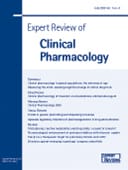
“(-)-β-caryophyllene (BCP), a cannabinoid receptor type 2 (CB2)-selective phytocannabinoid, has already been shown in precedent literature to exhibit both anti-inflammatory and analgesic effects in mouse models of inflammatory and neuropathic pain.
Herein, we endeavored to investigate the therapeutic potential of BCP on experimental autoimmune encephalomyelitis (EAE), a murine model of multiple sclerosis (MS). Furthermore, we sought to demonstrate some of the mechanisms that underlie the modulation BCP exerts on autoimmune activated T cells, the pro-inflammatory scenery of the central nervous system (CNS), and demyelination.
Our findings demonstrate that BCP significantly ameliorates both the clinical and pathological parameters of EAE. In addition, data hereby presented indicates that mechanisms underlying BCP immunomodulatory effect seems to be linked to its ability to inhibit microglial cells, CD4+ and CD8+ T lymphocytes, as well as protein expression of pro-inflammatory cytokines. Furthermore, it diminished axonal demyelination and modulated Th1/Treg immune balance through the activation of CB2 receptor.
Altogether, our study represents significant implications for clinical research and strongly supports the effectiveness of BCP as a novel molecule to target in the development of effective therapeutic agents for MS.” https://www.ncbi.nlm.nih.gov/pubmed/28368293
“β-caryophyllene (BCP) is a common constitute of the essential oils of numerous spice, food plants and major component in Cannabis.” http://www.ncbi.nlm.nih.gov/pubmed/23138934

.jpeg)







